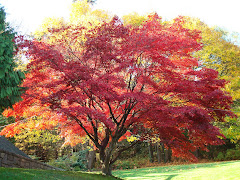










 Click on each picture for a much larger view. Thanks.
Click on each picture for a much larger view. Thanks.
 UNIQUE Earth Tone banded agate for evening or casual wear. This necklace is 20" long and it's a delight to see the light shine through. Both gemstones "the chips" and "the beads" are agate. The weight is only 72 grams and the beads are approximately 25L X 15W X 3D mm.
UNIQUE Earth Tone banded agate for evening or casual wear. This necklace is 20" long and it's a delight to see the light shine through. Both gemstones "the chips" and "the beads" are agate. The weight is only 72 grams and the beads are approximately 25L X 15W X 3D mm.Deposits of volcanic rock frequently harbor agate, which is formed when silicates make deposits in cracks and holes in rock. The outer layer of an agate tends to turn dark and crusty, but the layers inside form rich bands of color which can be cut in cross section and polished for use in jewelry. Agate is very similar to onyx, another form of chalcedony which forms in successive layers, but agates tend to have more irregular bands and a wider range of colors.
Some agates are so distinctive that they carry their own names, such as moss agate, a unique form which has feathers of rich mossy green riddling a white agate. Iris agate, another special occurrence of the rock, has a remarkable iridescent sheen. Both forms, along with other varieties, are used in rings, bracelets, and necklaces, and are usually cut large to show off the rich bands of color in the stone. Often, a piece of agate jewelry will have an unusual shape, to accommodate a unique and striking pattern in the stone.

Deposits of volcanic rock frequently harbor agate, which is formed when silicates make deposits in cracks and holes in rock. The outer layer of an agate tends to turn dark and crusty, but the layers inside form rich bands of color which can be cut in cross section and polished for use in jewelry. Agate is very similar to onyx, another form of chalcedony which forms in successive layers, but agates tend to have more irregular bands and a wider range of colors.
Some agates are so distinctive that they carry their own names, such as moss agate, a unique form which has feathers of rich mossy green riddling a white agate. Iris agate, another special occurrence of the rock, has a remarkable iridescent sheen. Both forms, along with other varieties, are used in rings, bracelets, and necklaces, and are usually cut large to show off the rich bands of color in the stone. Often, a piece of agate jewelry will have an unusual shape, to accommodate a unique and striking pattern in the stone.
Who is Daniel Swarovski? What are Swarovski crystals?
He invented and patented an innovative crystal cutting machine. Later the company patented many specialized items and created a special polishing system. This company sets the standard for the highest quality crystals available on the market. All of their crystals contain a minimum of 32% lead oxide and are faceted and polished to provide the highest light refraction possible.
Swarovski is the luxury brand name for the range of precision-cut crystal glass and related products produced by Swarovski AG of Wattens, Austria. The company was founded in 1895 by Armand Kosman and Franz Weis using Daniel Swarovski's expertise at glass-cutting and his family name. It was the 1892 invention and patenting of Swarovski's innovative electric glass-cutting machine which prompted the company to be created. Their first factory for producing carved crystal was built in Wattens, Austria.

Mollusks create mother of pearl to protect themselves. In addition to forming part of the shell, mother of pearl also insulates mollusks from bacterial infection, and reduces irritation from organic material which drifts into the shell. Irregularities often form in the mother of pearl as a result of irritation. If the irritation is extensive enough, the mollusk will form a large bump, prized in the human world as a pearl. Only the outer layer of the pearl is covered in mother of pearl, which is why it is important to care well for pearls so that they do not crack, revealing the source of irritation beneath.
The pearly lining of mollusk shells has long been noted by people living near the ocean. Many early cultures used mother of pearl extensively in jewelry, and it came to be highly prized. Although the popularity of mother of pearl has waned, many modern cultures can still appreciate the beauty of mother of pearl jewelry, and elaborate furniture inlays. Some homes integrate mother of pearl into tiles and other fixtures, although it is no longer used as extensively as it once was.
What is Murano?The glassmakers of Murano are credited with inventing or modernizing many varieties of glass, including the popular millefiori beads. These intricate beads are created by the layering of many different colors of glass during the solidifying process, which can then be formed into tiny patterns of flowers and geometric shapes. Murano glass also includes some varieties of white milk glass, and aventurine glass, which has gold and copper colored shimmers.
Murano glass and its history form much of the tourist trade for the island of Murano. Visitors, in addition to being able to purchase a large variety of Murano glass goods, can visit several museums dedicated to the art form, and even view glassmakers at works at one of the many glass factories. Many tourist attractions also feature glassblowing demonstrations for the tourist trade.
While the glass techniques are certainly important to the history of glassmaking, Murano glass is not universally adored. Coloring agents used in the firing process tend to produce extremely vibrant shades of blue, yellow and red. Some critics find the bright colors gaudy and disconcerting, and occasionally tacky. However, modern techniques do allow for more subtlety, and Murano glass is used in a variety of modern art pieces of high quality.
Gemstone Necklaces, Bracelets and Earrings, Gemstone Necklaces



